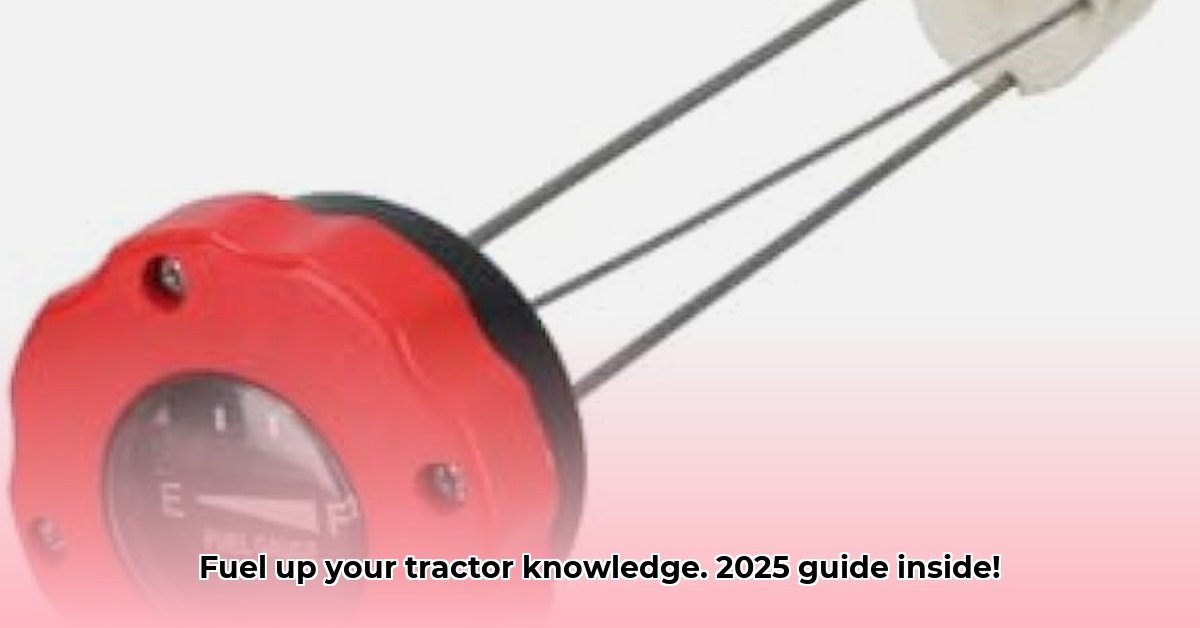
Navigating the Complex World of Tractor Fuel Caps
Choosing a tractor fuel cap might seem straightforward, but the market's lack of standardization and the variety of options available can be overwhelming. This guide provides a comprehensive overview to help you find the right cap for your needs, ensuring both fuel security and the longevity of your equipment. We'll explore different types, key considerations, and even a quick DIY replacement guide. For more on tractor fuel tanks, see this helpful resource.
Market Analysis: A Fragmented Landscape
The tractor fuel cap market is highly fragmented, with numerous manufacturers competing primarily on price and compatibility. This lack of standardization makes finding the perfect fit challenging. High demand exists due to regular replacements needed for wear and tear, damage, or simply upgrading to enhanced features. Material durability is a major concern; cheaper plastic caps are prone to cracking and UV degradation, while more durable metal options often come at a higher cost. This fragmented market necessitates careful consideration of multiple factors before purchasing. (A visual representation of market share by manufacturer would be beneficial here, if data were available.)
Types of Tractor Fuel Caps: A Detailed Breakdown
Tractor fuel caps vary significantly in material, compatibility, and features. Choosing the right one depends heavily on your tractor's make, model, and your specific requirements.
Material:
- Plastic: Lightweight and often less expensive, but susceptible to cracking, fading, and reduced durability over time. (Consider the impact of prolonged sun exposure on plastic caps.)
- Metal (Steel, Aluminum): More robust and durable, offering better resistance to damage and a longer lifespan. (Metal caps generally withstand harsh farm conditions better.)
Compatibility:
- Universal: Designed to fit a wide range of tractor makes and models. (While convenient, universal caps may not always offer the perfect seal.)
- Brand-Specific (OEM): Guaranteed to fit specific tractor brands, often providing a superior and safer fit. (OEM caps typically ensure optimal sealing and performance.)
Features:
- Vented Caps: Essential for pressure regulation, preventing leaks and potential fuel spills. (Proper venting is crucial for maintaining proper fuel tank pressure.)
- Locking Caps: Provide added security, deterring theft and unauthorized fuel access. (Locking caps enhance security, especially for tractors left unattended in fields.)
(High-quality images showcasing each type of fuel cap are recommended here.)
Factors to Consider When Buying a Tractor Fuel Cap
Selecting the right tractor fuel cap involves careful consideration of several key factors:
Material Quality: Prioritize durable materials like high-quality plastics or metals resistant to cracking, rust, and UV degradation. (A properly sealed cap significantly minimizes the risk of fuel leaks and environmental hazards.)
Seal Integrity: A tight seal is essential to prevent fuel leaks and maintain proper tank pressure. Check for robust seals and gaskets to ensure a secure fit. (Seal failure can lead to fuel loss, environmental contamination, and potentially dangerous situations.)
Compatibility: Verify compatibility with your specific tractor make and model; using a brand-specific or OEM cap is generally the safest choice. (Incorrect compatibility can result in leaks and improper operation.)
Price vs. Value: Balance cost with long-term value; a slightly more expensive, higher-quality cap often leads to fewer replacements and lower long-term costs. (Investing in a durable cap is likely to save money in the long run, reducing replacement costs.)
Warranty: A comprehensive warranty protects you against defects and provides peace of mind. (A manufacturer's warranty demonstrates their confidence in their product's quality and longevity.)
Safety Regulations: Ensure the chosen cap complies with relevant safety and emission regulations. (Compliance with safety regulations is crucial to minimize risks and ensure safe operation.)
Top Picks (with Important Caveats)
Due to the absence of standardized testing and varying tractor requirements, we cannot definitively identify the "best" fuel cap. However, several reputable brands offer high-quality options. Always prioritize the factors outlined above when making your selection. (Consult individual product reviews on reputable platforms to gather additional information.)
DIY Fuel Cap Replacement: A Step-by-Step Guide
Replacing a tractor fuel cap is generally straightforward. Always consult your owner's manual for specific instructions:
- Safety First: Turn off your tractor and avoid any open flames or sparks.
- Remove the Old Cap: Carefully unscrew the old cap.
- Clean the Area: Clean the fuel filler neck area.
- Install the New Cap: Screw on the new cap securely, ensuring a tight seal.
- Check for Leaks: After refilling, check for any leaks around the new cap.
(A pictorial guide would significantly enhance this section.)
Conclusion: Smart Choices for Long-Term Savings
Choosing the right tractor fuel cap is a crucial factor in ensuring both the safety and efficiency of your equipment. By considering material quality, seal integrity, compatibility, and warranty, you can make an informed decision that leads to long-term savings and optimal performance. Remember that while various options exist, a thorough understanding of your individual needs and diligent selection processes are ultimately paramount.